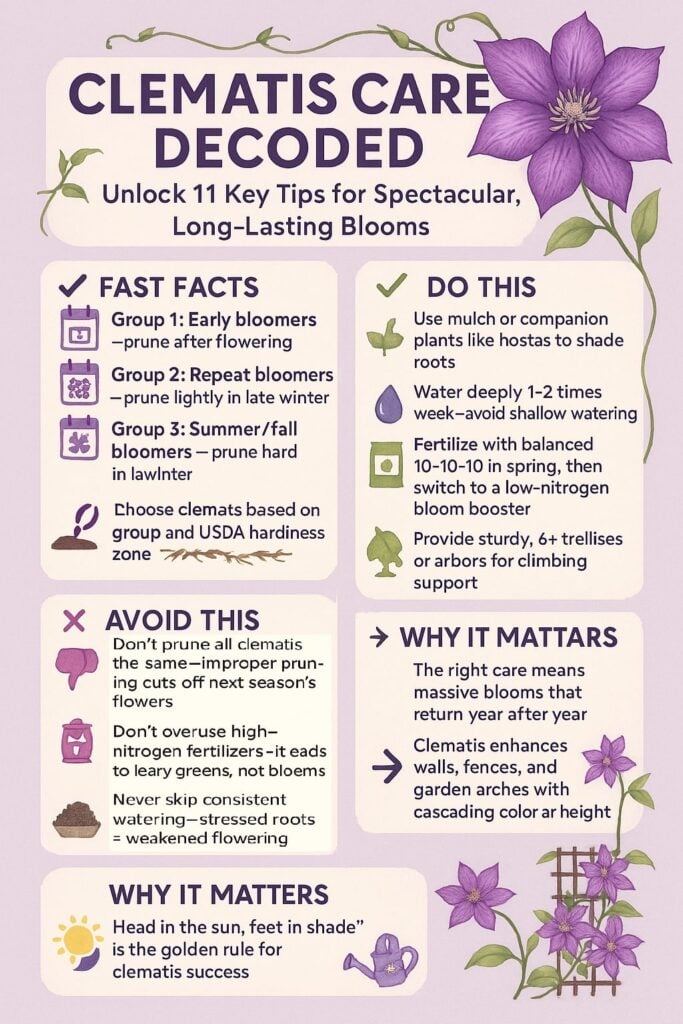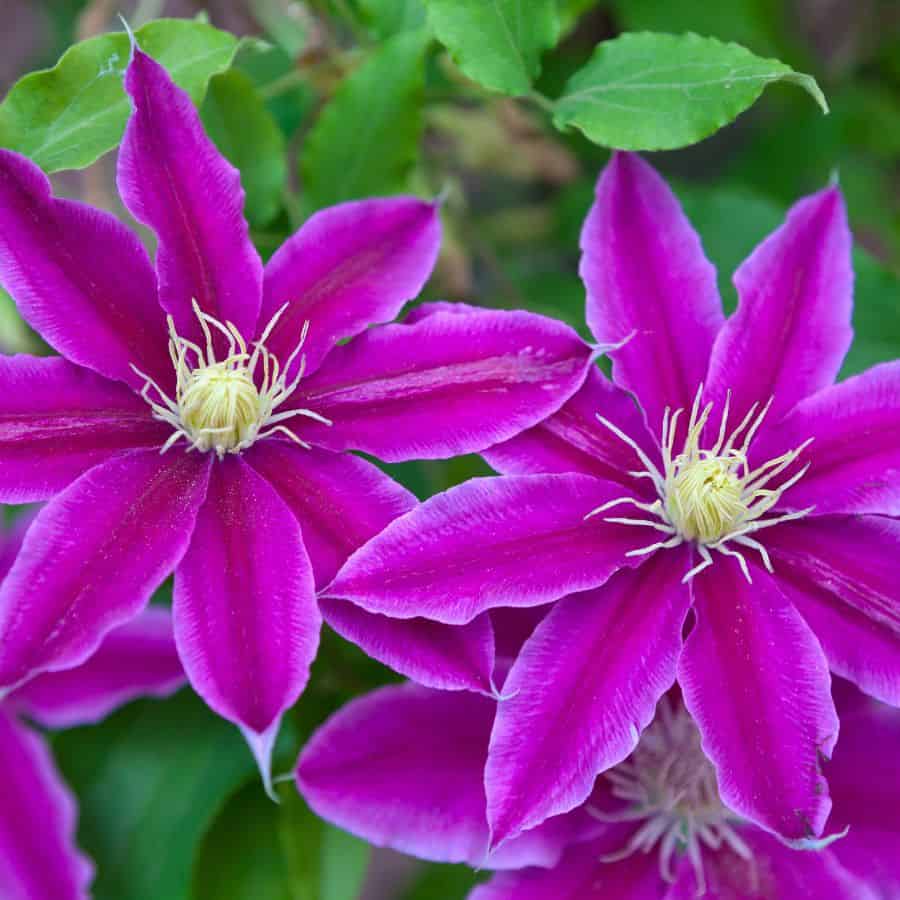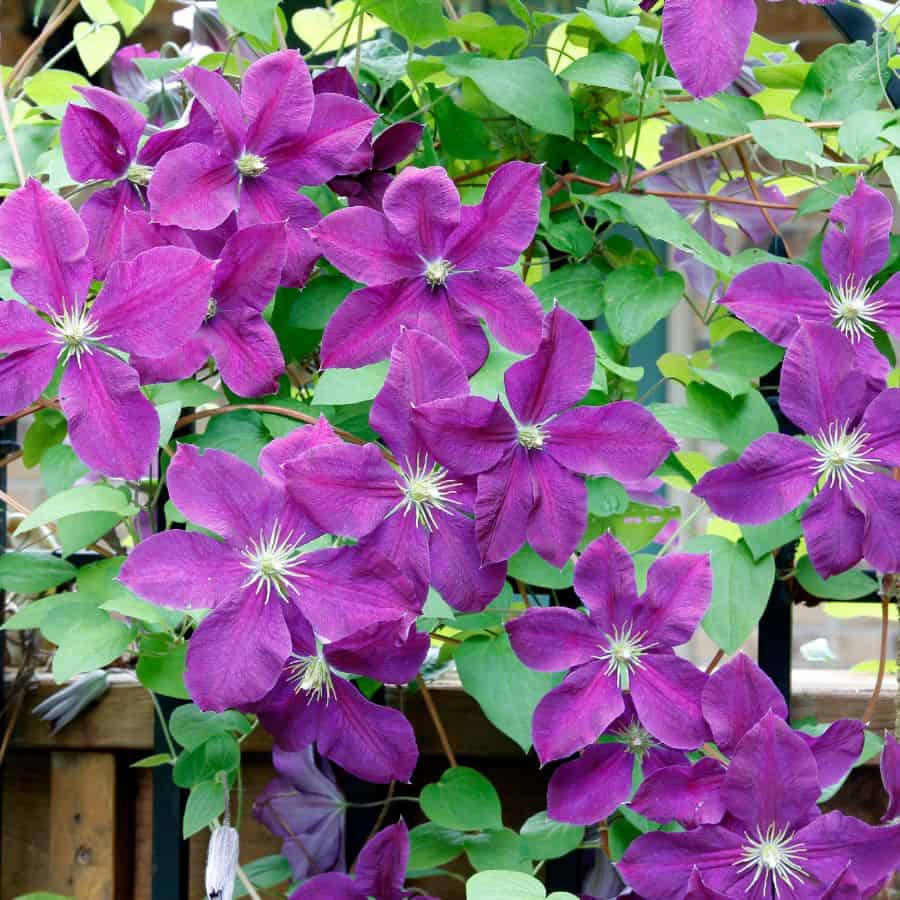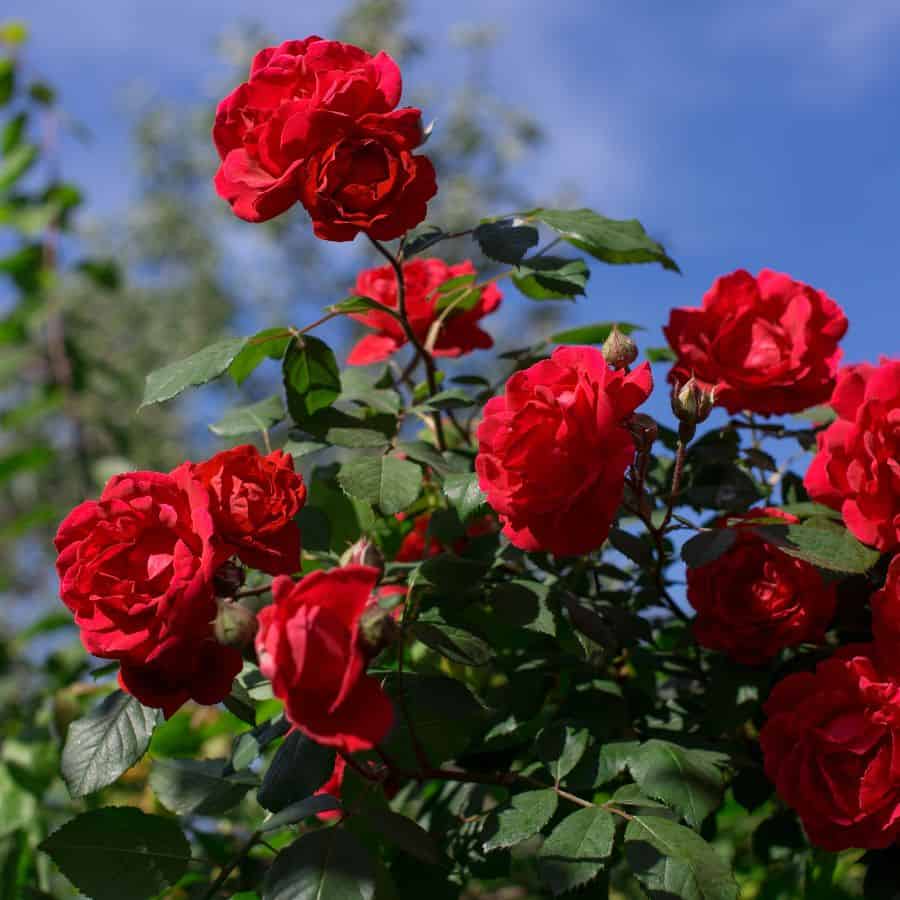
Is your clematis more disappointing than dazzling? You’re not alone. A shocking 70% of gardeners make critical mistakes with this stunning climber.
I was shocked to discover that the difference between a pathetic performer and a show-stopping clematis often comes down to just a handful of simple tweaks!
Ready to transform your plant from lackluster to breathtaking? Let’s unlock these game-changing secrets!
Match Your Clematis to Your Climate (Or Watch It Fail)
Forget what you’ve heard about clematis being finicky. They’re actually quite straightforward when you pick the right type!
Clematis varieties fall into three distinct groups, and choosing the wrong one for your climate is like wearing a bikini in a snowstorm; disaster guaranteed.

- Group 1: Blooms on old wood, perfect for cooler climates (think Clematis montana)
- Group 2: Flowers on both old and new wood, the versatile middle-child of the clematis world
- Group 3: Blooms only on new wood, thrives in warmer regions (like Clematis viticella)
The secret most plant experts won’t tell you is that checking your USDA hardiness zone first can save you years of frustration. For those chilly Zone 4 gardens, Clematis alpina will flourish while others would throw in the towel and wither away.
The Bizarre Planting Depth That Changes Everything
Here’s where most gardeners go terribly wrong! While most plants hate being buried too deeply, clematis actually thrives when planted like a submarine, submerged 2-3 inches below the soil surface.
This counterintuitive technique stimulates multiple stems and creates a root system that’s as strong as your coffee on Monday morning.
Dig a hole twice as wide and deep as the root ball, mix in compost like you’re making a gourmet soil sandwich, then bury that crown deeper than you’d think.
Your clematis will thank you with a spectacular growth explosion that’ll make the neighbors jealous. Trust me on this one!
The Pruning Truth That Will Transform Your Blooms
Pruning clematis strikes fear in the hearts of gardeners everywhere, but it’s actually dead simple once you know your group number.
Get this wrong, and you might as well take scissors to your prom photos; equally disappointing results!
- Group 1: Hands off! Only prune right after flowering, removing just the dead bits
- Group 2: Light trim in late winter/early spring (like a gentle haircut that keeps the length)
- Group 3: Dramatic chop in late winter. Cut everything back to about 12 inches from the ground (yes, really!)
Most people make this mistake with their clematis: they either prune everything the same way or they’re too scared to cut anything at all. Embrace your pruning shears. Your clematis is literally begging you to use it correctly!
The Sun-Shade Paradox: Why Your Clematis Looks Stressed
Your clematis is trying to tell you something important: “My head loves the sun, but my feet need shade!” This split personality is the key to vibrant blooms.
While the vines need 6+ hours of sunshine to flower properly, the roots desperately want to stay cool and moist.
The game-changer for your clematis isn’t what you think. It’s planting shorter perennials around its base or applying a thick layer of mulch to create that cool-root environment. Think of it as sunbathing with your feet in a cool stream; perfect balance!
Watering Wisdom: The Moisture Method That Actually Works
Is your watering routine more erratic than a toddler’s mood swings? That’s clematis suicide.

These plants demand consistency, evenly moist soil that’s never soggy and never bone-dry. It’s like dating, neither clingy nor distant, just reliably present.
Deep watering once or twice a week beats daily sprinkling every time. During heatwaves, your plant might need extra attention, but generally, a good soaking followed by slight drying creates the resilient root system that powers those spectacular blooms.
The Mulch Miracle Your Clematis Craves
Think of mulch as your clematis’ personal climate control system. A 2-3 inch organic mulch layer regulates soil temperature, locks in moisture, and slowly feeds your plant as it decomposes; talk about a multitasker!
Keep the mulch a few inches away from the stems (no collar rot, please!) and replenish it annually as it breaks down.
This simple hack reduces watering needs by up to 30% while delivering nutrients right where they’re needed. It’s basically a spa treatment for your plant’s roots!
Feed for Flowers: The Fertilizer Formula That Delivers
Drowning your clematis in nitrogen-heavy fertilizer is like feeding a marathon runner nothing but candy; lots of quick energy but poor performance.
Instead, use a balanced 10-10-10 fertilizer in early spring, then switch to a bloom-boosting, phosphorus-rich formula when flower buds appear.
The difference between amateur and pro plant parents is simply knowing when to feed and when to hold back. Overfeeding creates a leafy monster with few flowers, while the right balance creates the flowering spectacular you’ve been dreaming of!
Support Structures: Build It Right or Regret It Later
Clematis can climb 12+ feet tall and needs substantial support, not those flimsy dollar-store trellises that collapse in a strong breeze! Invest in sturdy structures at least 6 feet tall, whether trellises, arbors, or pergolas.
Train young vines by gently attaching them with soft ties (old pantyhose works brilliantly!). Once established, they’ll wrap and climb on their own like natural acrobats.
Remember to check ties periodically so they don’t strangle thickening stems. Your plant needs room to grow!
Pest Defense: Protect Your Investment
Nothing’s more heartbreaking than watching aphids, spider mites, or clematis wilt destroy your beloved plant. Regular inspection is your first line of defense; catch problems early while they’re still manageable.
For pest control, encourage beneficial insects by planting nectar-rich flowers nearby or use insecticidal soap for serious invasions.
To prevent clematis wilt (the dreaded sudden collapse), ensure good air circulation and immediately prune and destroy affected stems. Prevention truly is better than a cure!
Companion Planting: The Friendship Strategy
Your clematis doesn’t want to be lonely! Pairing it with compatible plants creates a garden relationship that benefits everyone.

Roses make perfect clematis partners. They provide sturdy support while the clematis adds a second layer of blooms. Talk about a power couple!
Other winning companions include lavender (natural pest repellent) and hostas (perfect root-shading groundcover).
Just avoid aggressive plants that might bully your clematis by competing for water and nutrients; not all garden relationships are healthy!
Seasonal Care: Your Year-Round Action Plan
Like any diva, clematis needs attention all year, not just during the flowering season. Follow this simplified calendar for spectacular results:
- Spring: Apply fertilizer, refresh mulch, and prune according to group type
- Summer: Water consistently, deadhead spent blooms, and monitor for pests
- Fall: Clean up fallen debris and cut back dead growth
- Winter: Add extra mulch for root protection in cold climates
This consistent care regime creates the conditions for those jaw-dropping displays that’ll have neighbors asking for your secrets. And now you have eleven of them!